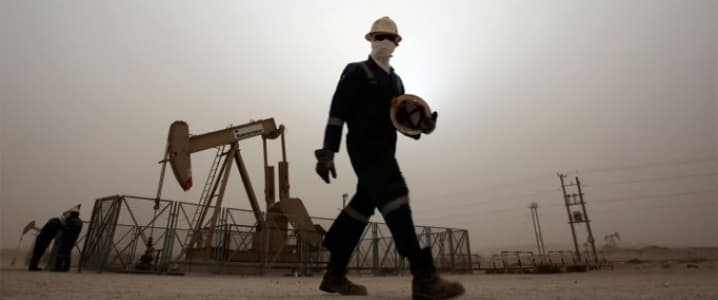The Wall Street Journal reported on Thursday:
OPEC said its members agreed that they need to cut crude output to reduce the world’s supply glut, a shift for the 14-member group that was enough to send oil prices higher, even though reaching a deal remains far from certain.
Members of the Organization of the Petroleum Exporting Countries said they reached an understanding after a six-hour gathering in the Algerian capital, but deferred until November the fraught task of finalizing a plan to make those cuts. OPEC officials said a committee would be formed to determine how much each country would have to cut and then report to the group at its next meeting on Nov. 30 in Vienna.
Once upon a time, OPEC regularly published crude oil production allocations for each of its members. If it were a functioning cartel, these would be interpreted as quotas or ceilings for each individual country. Here for example is how those production allocations were being reported by OPEC in 2010 (you can see this for yourself by looking up http://www.opec.org/home/quotas/ProductionLevels.pdf with the Wayback Machine).
(Click to enlarge)
Whatever those numbers meant, they were hardly a description of what individual countries actually did. Venezuela’s production was significantly below the allocation, while Saudi Arabia’s was often well above.
(Click to enlarge)
(Click to enlarge)
Notice also the yellow columns in the OPEC statement beginning in 2006. Here the “agreement” was that whatever level the country had been producing (acknowledging that this often had little relation to the official allocation), the countries supposedly agreed to cut production from those amounts by 1200 barrels/day between them. OPEC eventually dropped even this fiction, and the only way to see these today is with the Wayback Machine. Related: Gabon Aims To Boost Production After Joining OPEC
Does last week’s announcement mean that OPEC is going to return to the regime of a decade ago? The Wall Street Journal adds these details:
The group proposed cutting its collective output to between 32.5 million barrels a day and 33 million barrels a day, down from August levels of 33.2 million barrels a day, national oil ministers said.
So they didn’t actually agree on who was going to cut, or on how much it would be? Let’s break this down. Saudi Arabia was producing 10.5 mb/d in June. Historically, the kingdom has rarely pumped over 10, and on the few occasions when it did, it didn’t last for long. Even if you knew nothing of recent politics or the price of oil, a rational forecast might have called for lower levels than they’ve recently been producing.
(Click to enlarge)
Saudi Arabian field production of crude oil, in thousands of barrels per day, monthly Jan 1973 to June 2016. Blue line drawn at 10 mb/d. Data source: EIA Monthly Energy Review, Table 11.1a.
Up until this year, Iranian production had been depressed as a result of sanctions. With those lifted, it’s now back to about where it had been historically. Although Iran had announced ambitions of producing much more than their maximum levels of the last three decades, it again would not be that big a surprise if it turns out they won’t (or can’t) achieve that.
(Click to enlarge)
ADVERTISEMENT
Iranian field production of crude oil, in thousands of barrels per day, monthly Jan 1973 to June 2016. Data source: EIA Monthly Energy Review, Table 11.1a.
It is certainly in Saudi Arabia’s interest to stop Iranian production from increasing further. If the kingdom was planning to ease away from recent production gains for other reasons, it makes sense to try to use this as a bargaining chip. And Iran has reasons of its own to play along. Related: Tesla’s Self-Driving Car Continues To Improve
So are we returning to the old OPEC regime? Perhaps we are, if by that you mean a regime in which OPEC announces with great fanfare plans which the individual members had already decided to pursue on their own.
That doesn’t mean it’s completely without news value. As I mentioned, before last week’s announcement you might have expected Saudi Arabia to move back in the direction of its historical ceiling of 10mb/d.
And now you can have a little more confidence that is what is going to happen.
By Econbrowser
More Top Reads From Oilprice.com:
- Oil Rig Builders Tap Into Offshore Wind Market
- Why Libya Could Completely Derail OPEC’s Deal
- Why Are Investors Willing To Pay So Much For UK Utilities






















